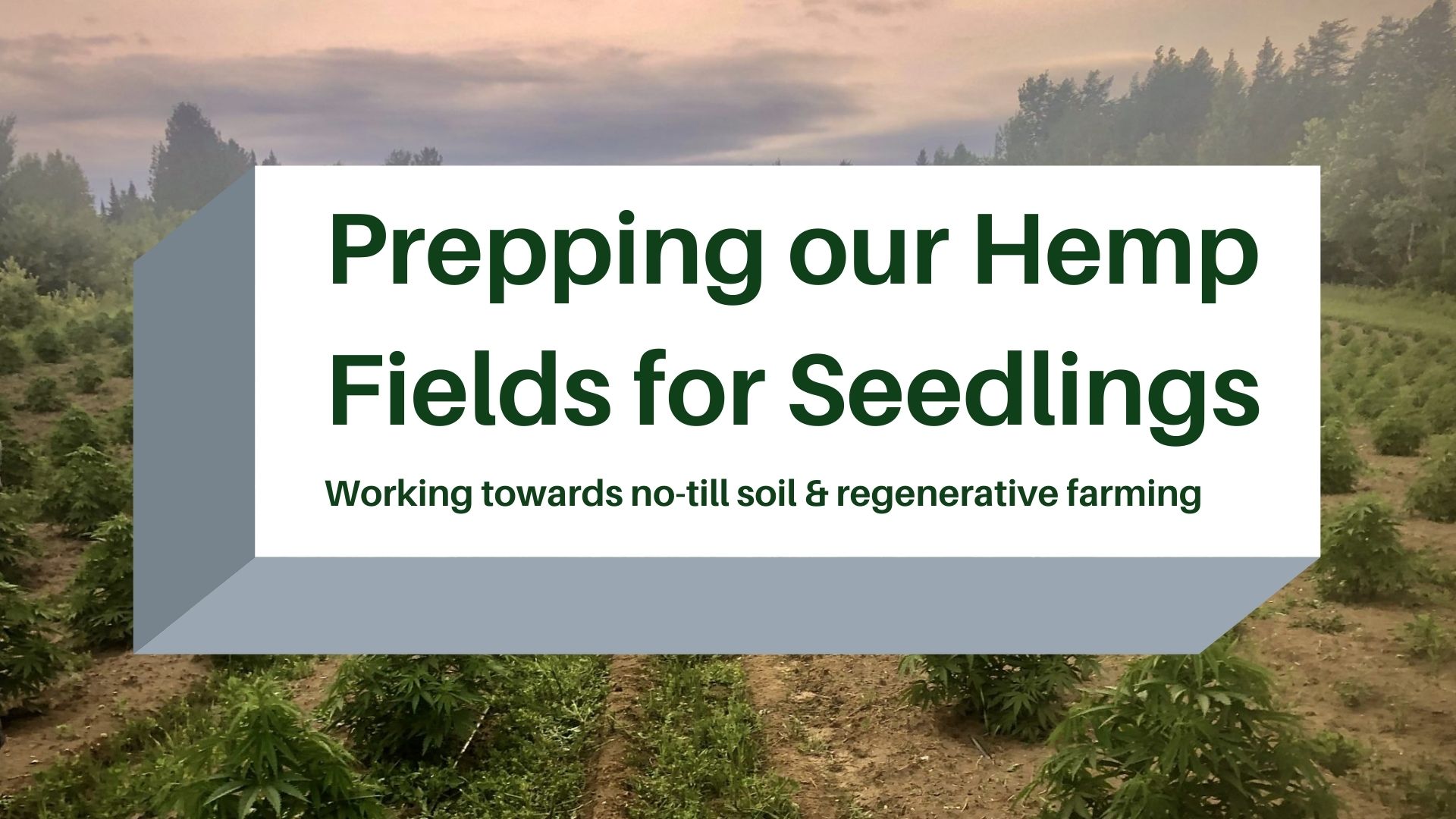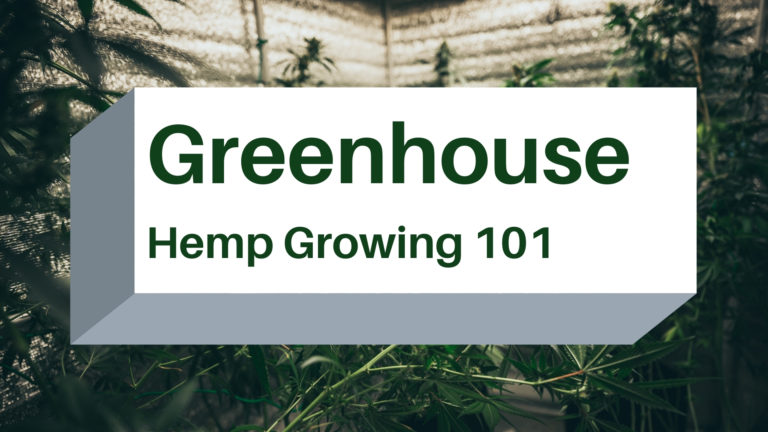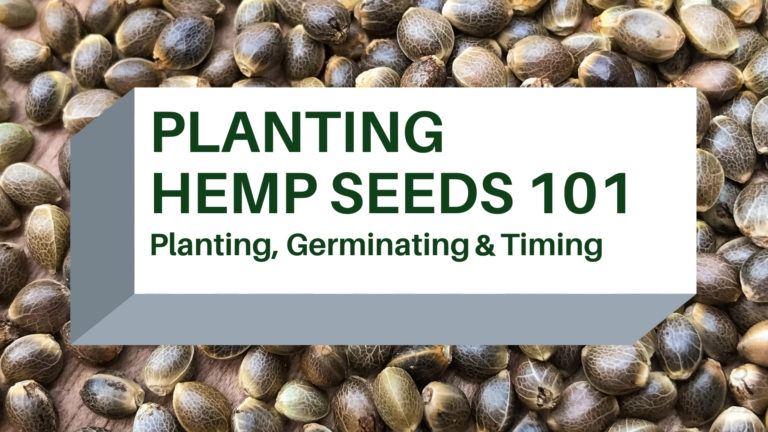Read the transcript.
The very first thing to learn about when you step into hemp cultivation is the best soil for growing hemp, which is more complicated than it sounds. Here at Hunger Mountain, we’ve managed to get a few years under our belts, so we’re happy to share a bit of our insight.
The Best Soil for Hemp
When it comes to planting hemp seeds, the best soil for hemp requires attention to three important attributes: pH levels, moisture levels, and nutrient levels. Here is a closer look at the best soil properties for growing hemp.
Best Soil pH for Hemp
The best soil pH level for hemp is usually between 6.0 and 7.0. Anything lower or higher can be detrimental to proper crop development, especially in the earliest stages of growth. Keep in mind, the best practice is to get the pH level where it needs to be before planting; hemp has a relatively short growing season, so adjusting after the fact can stunt growth.
Best Soil Moisture for Hemp
Hemp is impressively hardy where lack of soil moisture content is concerned. However, you definitely don’t want overly wet soil or soil that has a high concentration of clay, which can mean a lot of water retention. Wet and clay soil can be prone to compaction and crusting, both of which can pose problems for hemp growth.
Best Soil Fertilizer Ratios for Growing Hemp
The general ratio to aim for with a 1,500-pound crop yield would be:
- 150lbs of nitrogen
- 30lbs of phosphate
- 20lbs of potash
Do make sure you get a good soil sample tested before you use fertilizer. It is important to know what you are starting with before trying to adjust nutrient levels, as it goes with most crops.
The Best Soil for Different Purposes
Hemp can be grown for a lot of different reasons. The plant has its place in food products, textiles like fabrics and fibers, and obviously therapeutic products like CBD and other extracts. Before asking what soil does hemp grow best in, it can be worth noting that different end goals may require different types of soil. For example, when it comes to the best soil for hemp growing CBD extraction plans may require different fertilization methods to encourage flowering.
A Note About Bioaccumulativeness of Hemp
Hemp actually absorbs a lot of things from the soil, including heavy metals. With that being said, the best soil for hemp growing should be carefully monitored for agents that the hemp may absorb as it grows. If you are growing hemp to clean the soil, this bioaccumulative property is valuable, but not so much if you are growing an eventual consumer product.
Final Thoughts on the Best Soil for Hemp Growing
Since the passage of the 2018 Farm Bill, more and more farmers, agricultural gurus, and everyday people passionate about hemp have unearthed a newfound interest in growing hemp. As exciting as it is to have this crop back in action and open for cultivation, the long break from hemp farming means many people are still learning. We’ve all learned a great deal and will continue to learn more in the coming years. If you would like to know more about our regenerative farming practices at Hunger Mountain, be sure to check out our story and hemp-derived products.
YouTube Transcript:
Hi there, this is Ross from Hunger Mountain Hemp! Today we’re talking about soil prep and what we do to get the farm ready for planting hemp.
As you can see behind me, we’ve got some tilled-out rows here in this field. When we took over this farm two years ago, the soil was really compacted. We had to till the entire field in order to plant some deep-rooted grasses and some clover which are going to help aerate our soil and give us the proper nitrogen needed for our plants.
Figuring out the process that works best
So we’re building towards a regenerative fully no-till farm. But, unfortunately, you can’t do that on day 1. We understand that tilling is not the best method but right now that’s what we have to do to get our transplants in the ground! We plant with the water wheel transplanter and we need the soil broken up in order to get our transplants in the ground. You can see we have a nice loose soil that we can put our transplants in with our water wheel and also we’re able to bury our drip lines. Moving forward, we’re hoping that once our grasses can break up the soil we’ll be able to move to a no-till process, and that our soil quality will be high enough that we no longer need our drip lines as well.
So, as you can see, we’ve got nice, spaced out rows. If we want to walk over we can look at the equipment we use in order to get here! As you can see, we’ve got a pretty simple setup on the tractor. We didn’t want to spend a lot of money on a coulter wheel that spaces for you – we’re trying to be as regenerative as possible and reuse the stuff that we have on the farm.
Proper row spacing
Let’s take a look at what we did over here. Pretty simple. All we did was zip-tie some square tube steel, zip tied a piece of wood on the end of that, and then we simply put some washers on a rope. All stuff we had kicking around the farm so this costs us nothing. And when we’re tilling, we simply just drag this in the outside of our previously tilled row. That gives us our perfect spacing for our next row, and you can see these rows are nice and neatly spaced the whole way down the field.
Utilizing the tractor
What we’re using for a tractor – we’ve got a New Holland T475. That’s a 75 horse tractor. It’s plenty enough enough power to get whatever we need done on the farm. We’ve modified this tiller. It’s an EL62. When we bought this thing, like I said, we had to till the whole field. But now we’re slowly moving in and tilling just a short 26 inch path, which allows the grasses and all the organic matter that we’ve planted with our cover crop to continue to break up this soil and work towards that no-till that we talked about earlier.
Come on down underneath and we’ll show you what we did here so you can see all we did was unbolt these tines on the three outside rows on both sides so that we’re only tilling just in the middle portion. That was pretty easy to just unbolt those and get that set up.
When we’re running this tractor, we like to keep the door open on the back. What that does is it allows the soil to come right back out in the row to chuck right behind where we’ve tilled. If the door is down, the dirt’s going to slam into the door and spread wide, and we’re going to be basically digging a trench. So this way we can contain all the soil in a small portion of the field and allow the rest of the field time to regenerate and build our soil quality over the years. Now I’m going to get on and we’re going to show you how this thing works.
Copyright © 2024 Hunger Mountain Hemp |
Site by CannaPlanners




